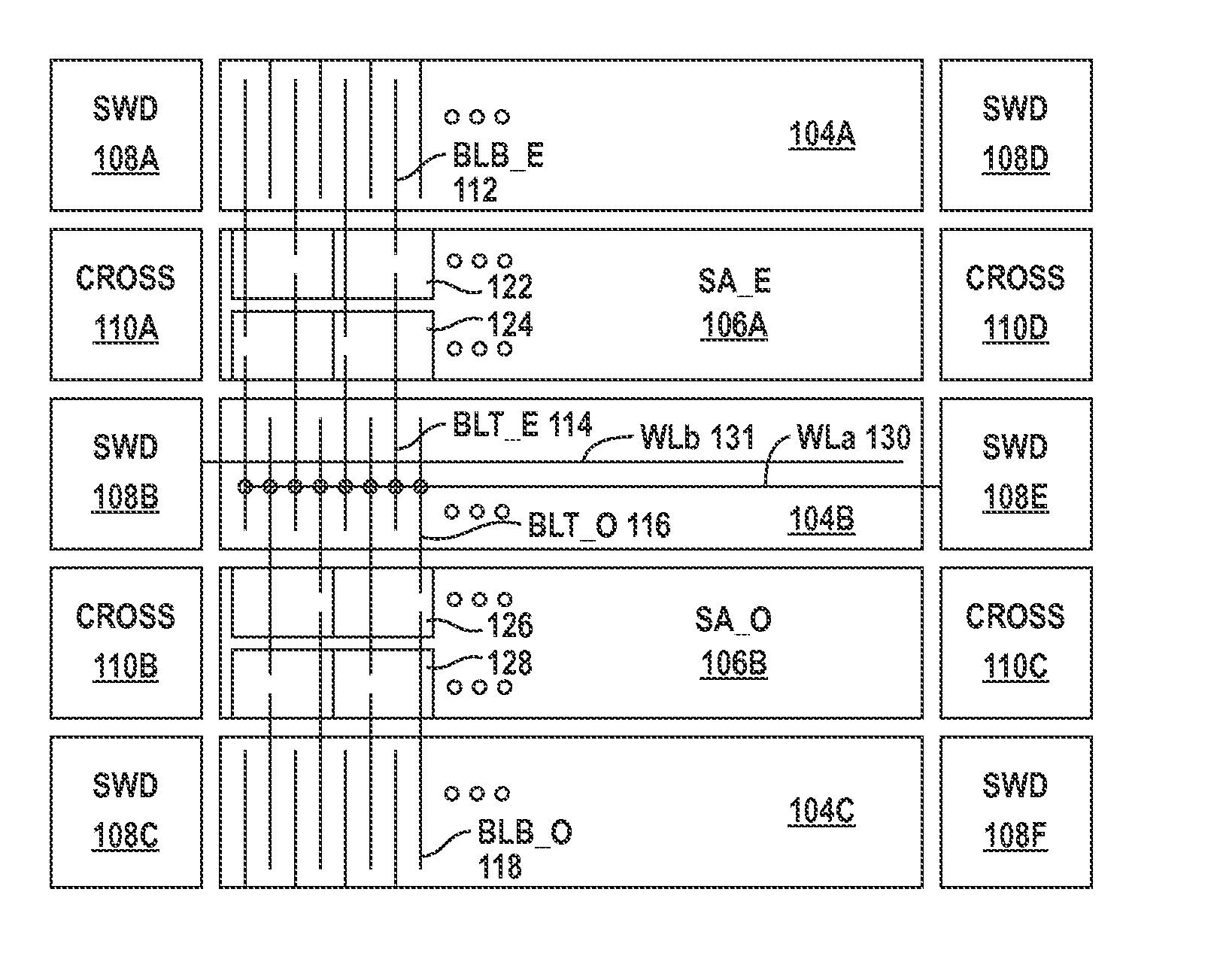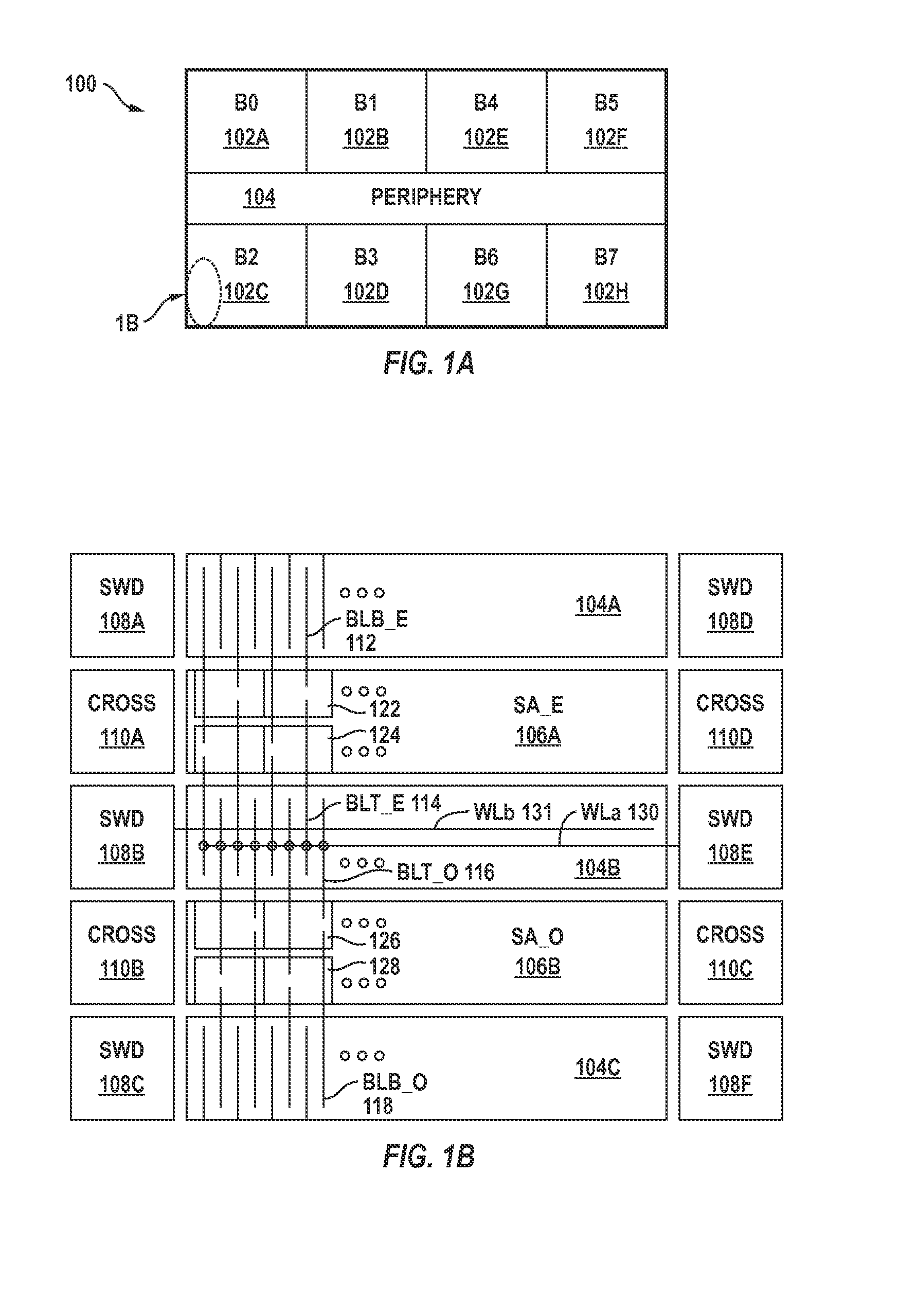Storage cell bridge screen technique
a technology of storage cell and screen, applied in the direction of information storage, static storage, digital storage, etc., can solve the problems of memory device malfunction, the bridge formed during the manufacturing process between neighboring memory cells,
- Summary
- Abstract
- Description
- Claims
- Application Information
AI Technical Summary
Benefits of technology
Problems solved by technology
Method used
Image
Examples
Embodiment Construction
[0023]Bridges between neighboring memory cells in a memory device are detected using a simple but highly effective technique. For illustration purposes only, the bridge screen technique is briefly described in the next paragraph in the context of what is named herein as the “odd bitline stress” condition. Under the “odd bitline stress condition,” a bridge between two neighboring memory cells, one of which is connected to an odd bitline and the other one connected to an even bitline, is detected by causing the even bitline to have a higher potential than the neighboring odd bitline thus causing the odd bitline to lose its potential through the conductive bridge between the two neighboring memory cells. It is noted that the bridge screen technique described herein is equally effective in the context of an “even bitline stress” condition where an odd bitline is caused to have a higher voltage level than a neighboring even bitline.
[0024]During testing, a known data pattern is written in...
PUM
 Login to View More
Login to View More Abstract
Description
Claims
Application Information
 Login to View More
Login to View More - R&D
- Intellectual Property
- Life Sciences
- Materials
- Tech Scout
- Unparalleled Data Quality
- Higher Quality Content
- 60% Fewer Hallucinations
Browse by: Latest US Patents, China's latest patents, Technical Efficacy Thesaurus, Application Domain, Technology Topic, Popular Technical Reports.
© 2025 PatSnap. All rights reserved.Legal|Privacy policy|Modern Slavery Act Transparency Statement|Sitemap|About US| Contact US: help@patsnap.com



